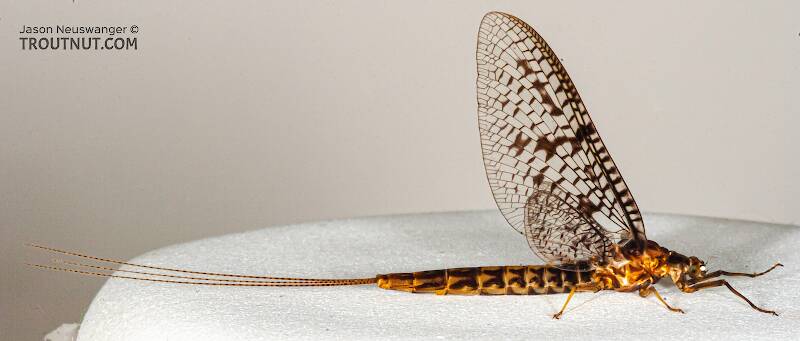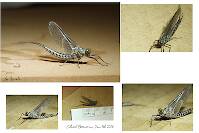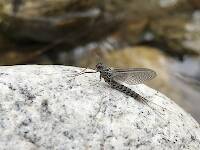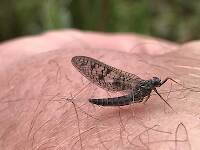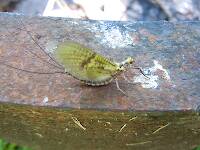
Hex Mayflies
Hexagenia limbata
The famous nocturnal Hex hatch of the Midwest (and a few other lucky locations) stirs to the surface mythically large brown trout that only touch streamers for the rest of the year.
Featured on the forum

This specimen appears to be of the same species as this one collected in the same spot two months earlier. The identification of both is tentative. This one suffered some physical damage before being photographed, too, so the colors aren't totally natural. I was mostly photographing it to test out some new camera setting idea, which worked really well for a couple of closeups.

Troutnut is a project started in 2003 by salmonid ecologist Jason "Troutnut" Neuswanger to help anglers and
fly tyers unabashedly embrace the entomological side of the sport. Learn more about Troutnut or
support the project for an enhanced experience here.
Jackson
Posts: 3
Posts: 3
Jackson on May 26, 2009May 26th, 2009, 10:16 am EDT
Is the Coffin fly the male spinner of the Green Drake or does the Brown Drake also produce a white spinner?
Konchu on May 26, 2009May 26th, 2009, 3:27 pm EDT
The Coffin Fly and Green Drake are different names for the same thing in the East. The Brown Drake is another species.
Jackson
Posts: 3
Posts: 3
Jackson on May 27, 2009May 27th, 2009, 2:55 am EDT
My understanding is that the Coffin Fly is the male spinner of the Green Drake and it is white when spent. Does the Eastern Brown Drake (different species) also have a white male spinner?? Can you have both species, Green and Brown, come off in the same waters (eastern spring creek) at the same time? The reason I ask is it appears that I have seen both on the water. Any really good way to distinguish these 2 species from each other besides the slight green color to the wings (green drake)?
Thanks, Ed
Thanks, Ed
Wiflyfisher on May 27, 2009May 27th, 2009, 5:06 am EDT
I can't say for out East, but I have never seen a Brown Drake spinner that looked like the Eastern Coffin Fly (Green Drake) in the Upper Midwest.
John S.
https://WiFlyFisher.com
https://WiFlyFisher.com
GONZO on May 27, 2009May 27th, 2009, 6:01 am EDT
Does the Eastern Brown Drake...also have a white male spinner??
Can you have both species, Green and Brown, come off in the same waters...at the same time?
Any really good way to distinguish these two species from each other besides the slight green color to the wings (green drakes)?
Jackson
Posts: 3
Posts: 3
Jackson on May 27, 2009May 27th, 2009, 6:34 am EDT
Great info Gonzo! Thanks for the help. Jackson
Martinlf on Jun 10, 2009June 10th, 2009, 3:23 pm EDT
I had very good luck with a pattern on the Delaware that uses a white foam post for the abdomen. It floats like a charm. Now to tie up some nuclear versions.
"He spread them a yard and a half. 'And every one that got away is this big.'"
--Fred Chappell
--Fred Chappell
Quick Reply
Related Discussions
Topic
Replies
Last Reply
4
Jun 17, 2020
by Leskorcala
by Leskorcala
6
Nov 12, 2006
by Martinlf
by Martinlf


